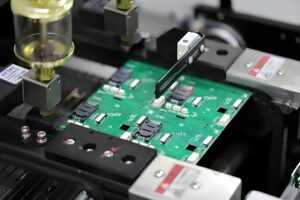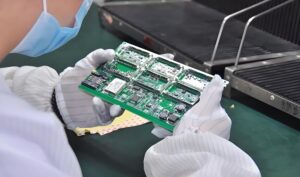NEWS

Possible defects encountered during PCBA processing.
In the process of PCBA surface mount processing, although we strive for perfection, it is inevitable to encounter some processing defects. Understanding these common defects is crucial for improving production quality and efficiency.

What are the commonly used SMT programming software
In SMT (Surface Mount Technology) programming, there are various commonly used software with different characteristics and functions. The following are some of the main SMT programming software:

Why does the circuit board expire?
The main reasons for expired circuit boards are related to their storage conditions, surface treatment processes, and shelf life management.

Common testing methods for SMT surface mount processing
The inspection in SMT surface mount processing is a key link to ensure product quality and production efficiency, including visual inspection, X-ray inspection, infrared inspection, automated optical inspection, solder paste inspection, online testing, flying pin testing, etc.

What is the role of Gerber files in PCBA processing?
Gerber file is a “guide” in the PCBA production process, which provides a standardized file format that details the PCB’s graphic information, wiring information, component installation positions, pad sizes, and other parameters.

The difference between small batch sampling and small batch production in SMT surface mount processing
In the field of SMT surface mount processing, small batch sampling orders and small batch production orders are two common production modes. Although they all involve SMT surface mount processing, there are significant differences in purpose, process, cost control, and flexibility.

What are the SMT process requirements for industrial control boards?
As the core component of industrial automation control, the manufacturing process of industrial control boards has extremely high requirements for accuracy and reliability. The following will explore in depth from the aspects of component preparation, printing and board making, mounting, welding, testing, and subsequent processing.

How important is ISO13485 certification for PCBA processing manufacturers?
ISO 13485 certification, as a quality management system standard in the medical device industry, has the purpose of ensuring compliance of medical devices, improving product quality and safety, enhancing customer trust and satisfaction, optimizing processes and resource management, etc.

How long does it take for PCBA sample delivery?
The lead time for PCBA sampling is the result of a combination of multiple factors. From PCB production to component procurement, to SMT/DIP processing and testing, every step may have an impact on the overall processing cycle.

The role of BOM table in PCBA processing
A standardized BOM table can ensure transparency, quality control, cost control, and change management in the production process.

Improve the quality of SMT surface mount processing
The SMT processing defect rate is influenced by various factors, including material quality, process parameter settings, equipment status, operator skills, and production environment.

Various special requirements for automotive electronic PCBA
The processing of automotive electronic PCBA has special requirements in automotive electronic systems, which usually involve safety, reliability, environmental adaptability, and performance.





